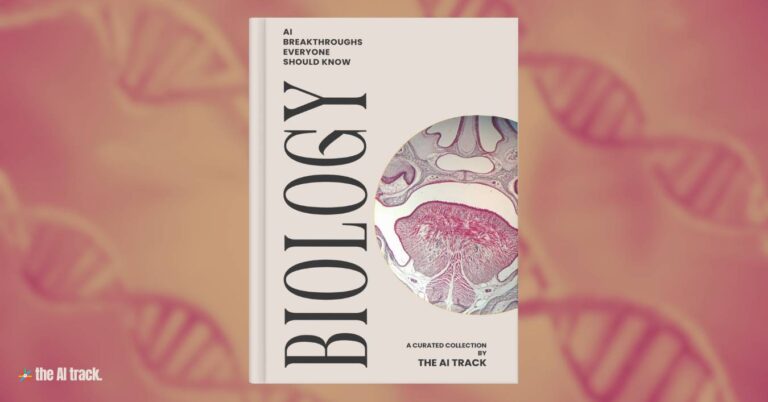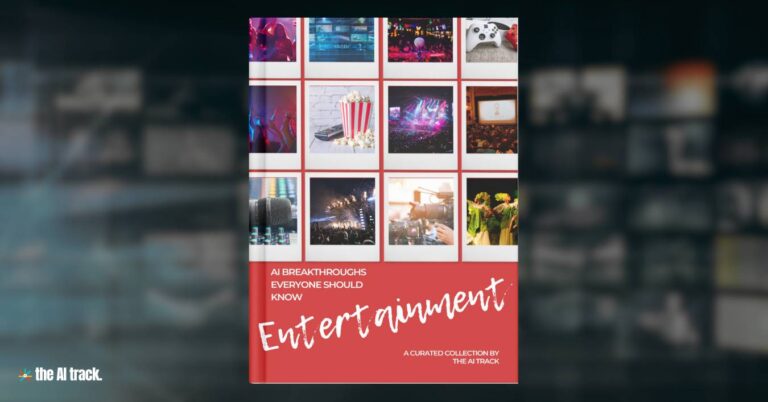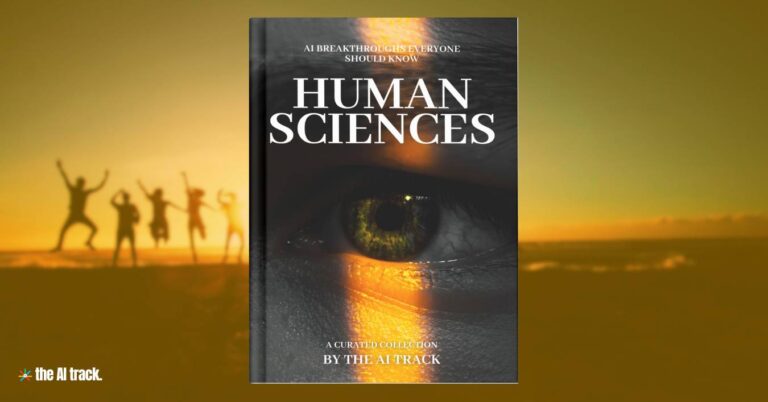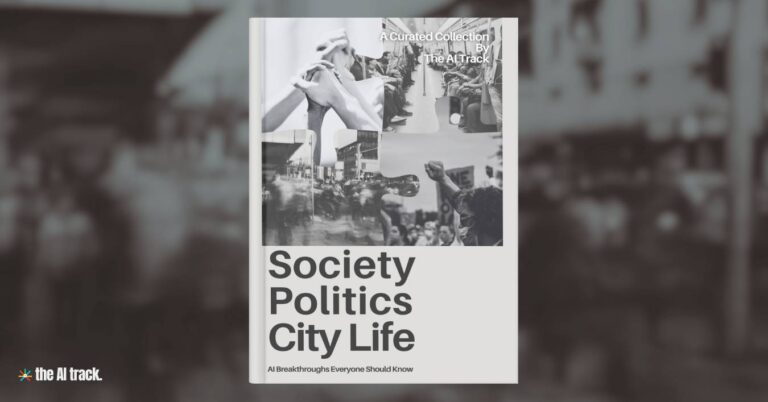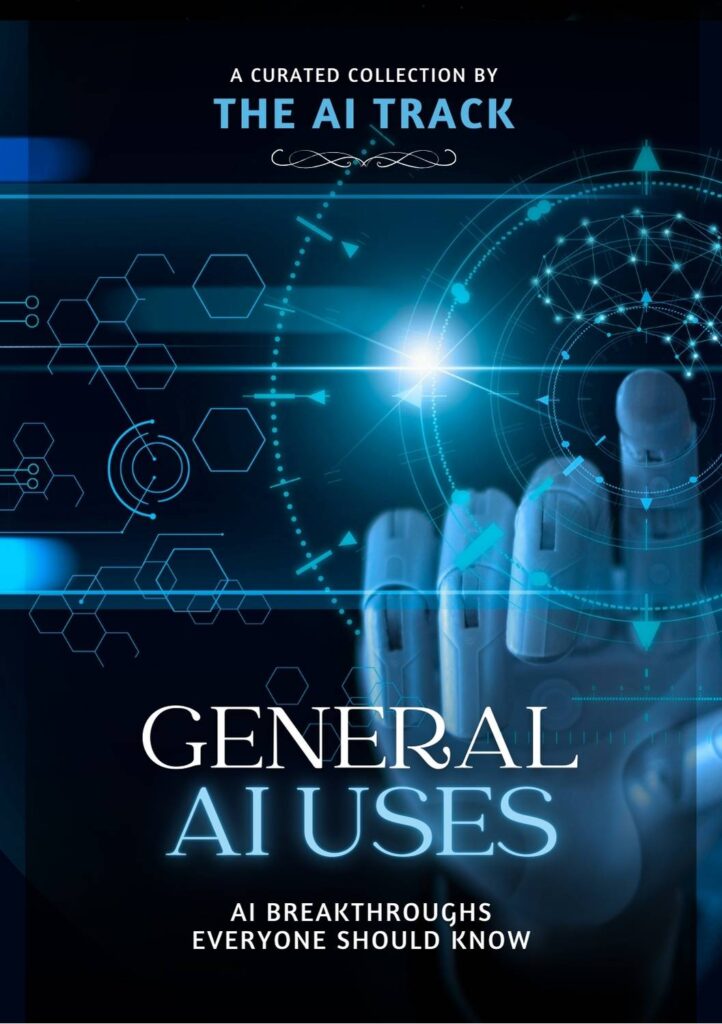
AI’s versatility allows it to be applied in countless ways across all sectors. This page compiles the most general and far-reaching uses of AI, showcasing its broad impact on various aspects of life and work.
Browse all the other fields in our curated collection of the most important AI Breakthroughs. Each section offers insights into how AI is transforming different sectors, providing a comprehensive view of its impact across a wide range of disciplines.
AI Breakthroughs - General Uses - At a Glance
The Revolution of AI in Healthcare: From Workflow Optimization to Personalized Medicine

The AI Track’s extensive analysis of the impact of AI in medical technology – how it is transforming healthcare by streamlining workflows, facilitating personalized medicine, and beyond. Explore the profound impact of AI in the medical field.
How AI could be used to recreate old smell
Original Article Title:
How AI could be used to recreate old smells
Source: BBC
Date: 4 March 2024

Key Takeaway
Scientists are exploring the use of Artificial Intelligence (AI) to recreate scents that might otherwise be lost to time.
Summary
- Scientists at the Norwegian University of Science and Technology are investigating the potential of AI to recreate smells.
- Memories often associate with specific scents, and as Earth’s environment changes, some smells might disappear.
- AI could help recreate scents by analyzing the precise list of chemicals needed.
- AI is defined as computers acting similarly to human brains, processing information to perform tasks.
- AI is widely used in various applications such as music and video streaming platforms, as well as software like Chat-GPT and image creation tools.
- Despite its benefits, AI also faces criticism, such as concerns about job displacement and academic integrity.
- AI has been used in diverse research areas, including finding energy-efficient homes, digitally unwrapping ancient scrolls, and searching for extraterrestrial life.
- Scientists categorized scents based on their characteristics and chemical makeup to feed information into AI machines.
- Readers are invited to share their thoughts on the use of AI in recreating scents and their favorite smells.
MIT’s New AI Model Predicts Human Behavior With Uncanny Accuracy
Original Article Title:
MIT’s New AI Model Predicts Human Behavior With Uncanny Accuracy
Source: SciTechDaily
Date: 19 April 2024

Key Takeaway:
Researchers at MIT and the University of Washington have developed a novel method for modeling decision-making behaviors of both human and AI agents, considering computational constraints. This approach aims to enhance the collaboration between AI systems and humans by comprehending and adapting to human irrationalities and decision-making processes.
Key Points:
- MIT and University of Washington researchers created a framework to model the irrational or suboptimal behavior of human or AI agents, accounting for their computational constraints.
- Their model aims to predict future actions of agents based on their past behavior, such as in chess matches, by automatically inferring the agents’ computational constraints.
- The technique demonstrates potential applications in inferring navigation goals from prior routes and predicting players’ moves in chess, outperforming other methods for modeling decision-making.
- The research could improve AI systems’ collaboration with humans by allowing them to understand and respond better to human behavior, thereby making AI assistants more effective.
- The model infers an agent’s depth of planning from past actions, aligning them with decisions made by problem-solving algorithms to determine the agent’s inference budget.
- This approach is efficient and interpretable, capable of predicting behavior across various tasks and domains, including navigation, communication, and chess.
- The researchers intend to expand their method to other areas like reinforcement learning and continue developing more effective AI collaborators.
- The work was supported by the MIT Schwarzman College of Computing Artificial Intelligence for Augmentation and Productivity program and the National Science Foundation.
AI Is Revolutionizing Waste Sorting
Original Article Title:
Turning Trash Into Treasure: How AI Is Revolutionizing Waste Sorting
Source: Forbes
Date: 31 May 2024

Key Takeaway: AI is transforming waste sorting by turning trash into valuable resources, significantly enhancing recycling efficiency and sustainability.
Key Points:
- Advanced Sorting: AI systems can accurately separate recyclable materials from waste, reducing contamination.
- Economic Impact: Efficient waste sorting can lead to new revenue streams from recycled materials.
- Environmental Benefits: This technology supports a circular economy by minimizing landfill use and maximizing resource recovery.
Why This Matters: AI-driven waste sorting could play a crucial role in addressing global environmental challenges and promoting sustainable practices.
Voices of AI: Insights and Quotes from the Top’ offers a unique compilation of quotes and perspectives from top AI executives and thinkers.
AI is used to recreate digital versions of deceased individuals.
Original Article Title:
Never Say Goodbye: Can AI Bring the Dead Back to Life?
Source: Al Jazeera
Date: 9 August 2024
AI is used to recreate digital versions of deceased individuals. The technology uses vast amounts of data, including social media posts, photos, videos, and text messages, to construct an avatar that can engage in conversations and simulate the presence of the deceased. Machine learning algorithms analyze this data to replicate the speech patterns, mannerisms, and responses of the individual. While some see it as a way to preserve memories, others raise ethical concerns.
Key Points:
- AI-Generated Avatars: Advances in AI technology have made it possible to create digital avatars of deceased individuals. These avatars can mimic the appearance, voice, and even personality of the departed, offering loved ones a way to interact with a lifelike representation of the deceased.
- Technological Capabilities: The technology uses vast amounts of data, including social media posts, photos, videos, and text messages, to construct an avatar that can engage in conversations and simulate the presence of the deceased. Machine learning algorithms analyze this data to replicate the speech patterns, mannerisms, and responses of the individual.
- Ethical Concerns: The concept of “bringing the dead back to life” through AI raises significant ethical questions. Issues include the potential for exploitation, the impact on the grieving process, and the psychological effects on those interacting with the avatars. Critics argue that this technology could blur the lines between reality and artificiality, complicating the natural process of mourning.
- Emotional Implications: For some, interacting with an AI-generated avatar may provide comfort and a sense of connection, allowing them to preserve the memory of their loved ones. However, for others, it may hinder the ability to move on from the loss, as the digital presence may serve as a constant reminder of the deceased.
- Cultural and Religious Considerations: The use of AI to recreate the dead also intersects with cultural and religious beliefs about death, the afterlife, and the sanctity of life. Different societies may have varying responses to this technology, with some embracing it as a tool for remembrance and others rejecting it as unnatural or disrespectful.
- Future Prospects: As AI technology continues to evolve, the ability to create more sophisticated and convincing digital replicas will likely improve. This raises further questions about the future of human interaction with AI and the potential societal impacts of such developments.
Why This Matters:
The use of AI to recreate deceased individuals represents a significant and controversial development in the intersection of technology and human emotion. While it offers new ways to preserve memories and maintain connections, it also challenges traditional notions of life, death, and mourning. As this technology advances, society will need to grapple with its ethical and emotional ramifications, balancing innovation with respect for the deeply personal nature of grief.
AI technology is used to analyze video footage of individuals eating to determine the nutritional value of their diet.
Original Article Title:
AI to watch every spoonful you eat and calculate your calorie consumption
Source: Sky News
Date: 4 June 2024
Scientists in Canada are developing AI technology to analyze video footage of individuals eating to determine the nutritional value of their diet. This system monitors and calculates calorie intake with a 4.4% margin of error, aiming to help people manage their health more effectively through advanced image recognition and data processing.
Researchers have developed an "AI Scientist" capable of automating the research process
Original Article Title:
Researchers built an ‘AI Scientist’ — what can it do?
Source: Nature
Date: 30 August 2024
Researchers have developed an “AI Scientist” capable of automating the research process, including hypothesis generation, experimentation, and paper writing. While it’s limited to machine learning and lacks hands-on lab work, it represents a significant step towards the automation of science.
Key Points:
- Functionality: The AI conducts literature reviews, formulates hypotheses, tests algorithms, and produces papers, mimicking a full research cycle.
- Limitations: Currently restricted to machine learning, the AI lacks the ability to conduct physical experiments.
- Future Potential: Researchers believe it could automate repetitive scientific tasks, freeing human scientists for more creative work.
Explore our AI Books hub for detailed summaries of the most influential AI books. Discover key insights, actionable takeaways, and viral quotes.
A new study introduces a Principal Odor Map (POM), an AI-driven model that effectively predicts odor qualities
Original Article Title:
A principal odor map unifies diverse tasks in olfactory perception
Source: Science
Date: 31 August 2023
A new study introduces a Principal Odor Map (POM), an AI-driven model that effectively predicts odor qualities by mapping molecular structures to human olfactory perceptions, surpassing traditional methods and even trained human panelists in accuracy.
Key Points:
- Innovative Approach: The POM uses graph neural networks (GNNs) to map the relationship between chemical structures and perceived odors, addressing a longstanding challenge in olfaction.
- Validation Success: Tested on 400 novel odorants, POM outperformed the median human panelist, accurately predicting odor profiles even without explicit training for specific tasks.
- Generalization: POM’s robust performance across various olfactory tasks suggests its potential as a universal tool for predicting and digitizing odors.
- Dataset: Trained on a dataset of ~5,000 molecules, the model’s predictions are based on molecular structure, overcoming limitations of prior chemoinformatic models.
- Practical Implications: The POM could revolutionize industries reliant on scent, like perfumery and food flavoring, by enabling precise odor prediction and new fragrance creation.
Why This Matters:
The POM could lead to significant advancements in understanding human olfaction and create new opportunities in scent-related industries, offering a powerful tool for digitizing and predicting odors at a human level of accuracy.
Osmo (a startup) aspires to digitize scents, envisioning a "Shazam for smells" where scents can be captured, transmitted, and recreated digitally.
Original Article Title:
This Startup Is Using AI to Unearth New Smells
Source: Wired
Date: 24 January 2023

Osmo, a startup spun out of Google Research, is pioneering the use of AI to create novel scent molecules. These innovations could revolutionize the fragrance industry, offering sustainable alternatives to traditional, often endangered, natural ingredients.
Key Points:
- AI-Driven Scent Creation: Osmo uses AI to predict and design the smells of new molecules, aiming to supply the $30 billion fragrance industry with sustainable and novel scents.
- Challenges in Scent Replication: Traditional scent ingredients are increasingly difficult to source due to environmental and geopolitical factors. Osmo’s AI approach could replace endangered or controversial materials like sandalwood and animal-derived musk.
- Technological Foundation: The AI system was trained on a dataset of 5,000 scent molecules and successfully predicted the scents of 400 novel molecules, outperforming human predictions in accuracy.
- Mosquito Repellent Development: Osmo is also leveraging AI to find new mosquito repellents, potentially more effective and safer than current options like DEET.
- Future Vision: Osmo aspires to digitize scents, envisioning a “Shazam for smells” where scents can be captured, transmitted, and recreated digitally.
Why This Matters:
Osmo’s innovations address critical supply chain challenges in the fragrance industry and could lead to breakthroughs in mosquito repellents and even the digitization of smell, a feat that could transform how we experience and share olfactory sensations.
AI detects human emotions from text with 84% accuracy
Original Article Title:
Happy, sad or angry? AI can detect emotions in text according to new research
Source: The Conversation
Date: 1 October 2024

Osmo, a startup spun out of Google Research, is pioneering the use of AI to create novel scent molecules. These innovations could revolutionize the fragrance industry, offering sustainable alternatives to traditional, often endangered, natural ingredients.
Key Points:
- AI-Driven Scent Creation: Osmo uses AI to predict and design the smells of new molecules, aiming to supply the $30 billion fragrance industry with sustainable and novel scents.
- Challenges in Scent Replication: Traditional scent ingredients are increasingly difficult to source due to environmental and geopolitical factors. Osmo’s AI approach could replace endangered or controversial materials like sandalwood and animal-derived musk.
- Technological Foundation: The AI system was trained on a dataset of 5,000 scent molecules and successfully predicted the scents of 400 novel molecules, outperforming human predictions in accuracy.
- Mosquito Repellent Development: Osmo is also leveraging AI to find new mosquito repellents, potentially more effective and safer than current options like DEET.
- Future Vision: Osmo aspires to digitize scents, envisioning a “Shazam for smells” where scents can be captured, transmitted, and recreated digitally.
Why This Matters:
Osmo’s innovations address critical supply chain challenges in the fragrance industry and could lead to breakthroughs in mosquito repellents and even the digitization of smell, a feat that could transform how we experience and share olfactory sensations.
BMW ConnectedRide Smartglasses: 5 ways to Smarter & Safer Driving
Original Article Title:
BMW ConnectedRide Smartglasses: 5 ways to Smarter & Safer Driving
Source: The AI Track
Date: 22 July 2024

Key Takeaway:
BMW’s ConnectedRide Smartglasses offer real-time, heads-up display navigation for motorcyclists, integrating seamlessly with the bike’s display via Bluetooth. The innovative tech enhances rider safety and convenience by projecting essential data, such as speed, navigation, and gear, directly into the rider’s field of view.
Key Points:
- Launch & Functionality: Officially available for motorcyclists with Bluetooth connectivity.
- Safety Enhancements: Real-time information displayed without needing to look away from the road.
- Compatibility: Works with various models, available with prescription lenses.
Why This Matters:
This tech improves road safety by reducing distractions, offering a futuristic upgrade to the riding experience.



